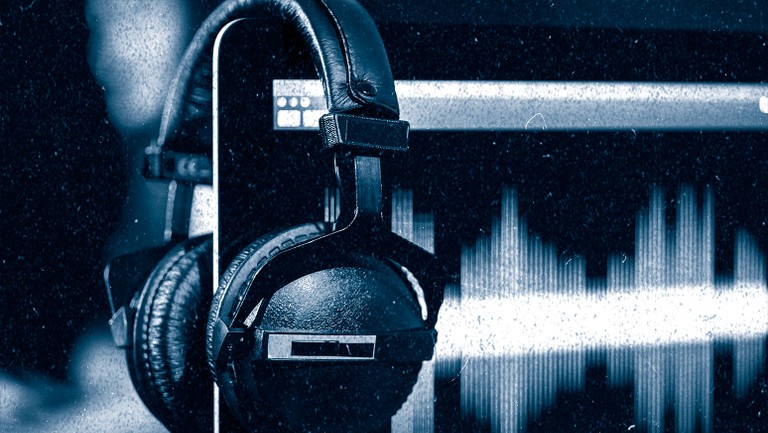UPDATE: On May 17, Amazon Music announced its HD music will be available to all Unlimited subscribers at no extra cost ($9.99 a month, $7.99 for Prime members). Apple Music then unveiled its own high-fidelity plans, also with a $9.99 price tag.
This year, more big streaming services are offering a new way to listen to music that makes it sound richer than it has in ages. The question is, how many people will pay a premium for it?
Early results from Amazon Music, which launched its “high-quality, lossless audio” high-definition service in 2019, are promising. The company says that HD subscriptions ($12.99 a month for Prime members, compared with $7.99 for its standard Unlimited tier) have grown 100% globally year over year as of March.
Amazon is also seeing a bump in engagement from customers upgrading to its HD option: Those subscribers streamed, on average, 11% more overall and 16% more on albums in the first 30 days after switching, and both the hip-hop and rock genres’ global market shares are 20% higher on HD than on Unlimited.
“It has exceeded everybody’s expectations,” says Amazon Music vp Steve Boom. While he declined to share numbers, he notes, “You could add up [the subscribers to] all the other HD services together and they wouldn’t be close to us.”
 READ MOREAmazon Spent $11B on Video, Music Content in 2020
READ MOREAmazon Spent $11B on Video, Music Content in 2020
That bodes well for Spotify, which will launch its own hi-fi tier later this year, and Apple Music reportedly has a version in the works as well. With high-fidelity subscriptions averaging $15 to $20 a month, this could help Spotify increase its closely watched average revenue per user, which has been declining since 2017.
Follow Sync Mashene on our Social Media: LinkTree
Music’s sound quality tanked with the popularity of MP3s and then the arrival of iTunes in 2001, prompting most listeners to sacrifice CD-quality sound for compressed digital files. Since then, companies like TIDAL and Deezer have established businesses in part as high-fidelity alternatives, but for the most part, streaming audio quality is near that same low point it was when file-sharing was the norm.
Music sound quality started slipping when iTunes arrived in 2001, prompting most listeners to adjust from CD-quality sound to compressed digital files designed to fit on iPods and eventually smartphones. In the mid-2010s, upstarts including Tidal and Deezer began offering high-fidelity music streaming options as cellular connections got stronger and could handle the bigger music files, garnering moderate success with their offerings. Jay-Z‘s purchase of Tidal in 2015 put a spotlight on the small Norwegian streaming service and its high-fidelity offering, but Amazon tested the broader demand for improved audio quality when it launched Amazon Music HD in 2019, forcing Spotify to follow.
 READ MOREWith Square’s Tidal Acquisition, New Interim Head Says, ‘We’re Not Trying to Win The Ear’
READ MOREWith Square’s Tidal Acquisition, New Interim Head Says, ‘We’re Not Trying to Win The Ear’
Amazon’s move followed years of backroom discussions about the potential for increased revenue from a more expensive subscription tier, not to mention lots of pleading by artists like Neil Young for streaming services to deliver music as the artists and producers intended it to sound. Amazon Music HD offers over 70 million CD-quality songs (16-bit / 44.1kHz) and millions of “Ultra HD” tracks (24-bit / 48kHz, 96 kHz, 192 kHz) — effectively studio masters — as well as immersive 3D audio tracks mixed in both Dolby Atmos and Sony 360 Reality Audio, where Amazon’s 3D offering has grown ten times over since it was introduced in 2019.
“We’re very proud of the innovation we brought to the industry,” Boom says, referencing the price decrease for Amazon Music HD (compared to the $20 a month Tidal and Deezer were charging at the time for their Hi-Fi services) and making Alexa and smart speakers a key part of Amazon’s music offerings.
According to a 2020 study from music research firm MusicWatch, 69.2 million people in the United States between the ages of 13 and 65 are open to paying more for a service that can provide studio-quality sound. “The question is, how do the hardware partners, the [digital service providers] and even the labels bring the consumer to the water and make them drink?” says MusicWatch managing partner Russ Crupnick. “Eventually, we will all be listening to something that has better sound quality, regardless of what it’s called, just as TV went from 720p to 1080p to 4K and now 8K.”
 READ MORESpotify Unveils HiFi Tier, Podcast Tools & New Offerings for Creators at ‘Stream On’ Event
READ MORESpotify Unveils HiFi Tier, Podcast Tools & New Offerings for Creators at ‘Stream On’ Event
Amazon agrees and expects its HD tier to become its subscribers’ most popular choice. “We see this as the future,” says Amazon Music global head of artist and label relations Andre Stapleton. “We wanted to set this standard, and we want it to be adopted by everybody.”
In its bid to attract users, Amazon has worked with artists including Halsey and Camilla Cabello in campaigns for its HD service to talk about their music and how they want it to be heard. Similarly, during Spotify’s Hi-Fi announcement in February, it had Billie Eilish and FINNEAS announce the service and explain to users why sound quality matters to them.
Both moves are designed to get young people excited about audio quality, and on Amazon’s end it seems to be working so far. Hip-hop, Amazon Music HD’s second most popular genre, “is growing very nicely on the service in general,” says Stapleton. “But when it’s outpacing that growth in Amazon Music HD, that was just a really pleasing sign to us that, ‘Oh, this really matters to younger audiences, it matters to some of the biggest, most popular genres in the land.” Stapleton says.  READ MOREHi-Res Streaming Service Qobuz Launches In Australia, NZ
READ MOREHi-Res Streaming Service Qobuz Launches In Australia, NZ
“As a music lover, it’s good to see other services following our lead, coming around to the realization that music quality does matter and that listeners and artists both care deeply about it,” Boom says. “If we’re in the business of serving listeners as customers and artists as customers, then I don’t know what took them so long.”
Article Source: Billboard







